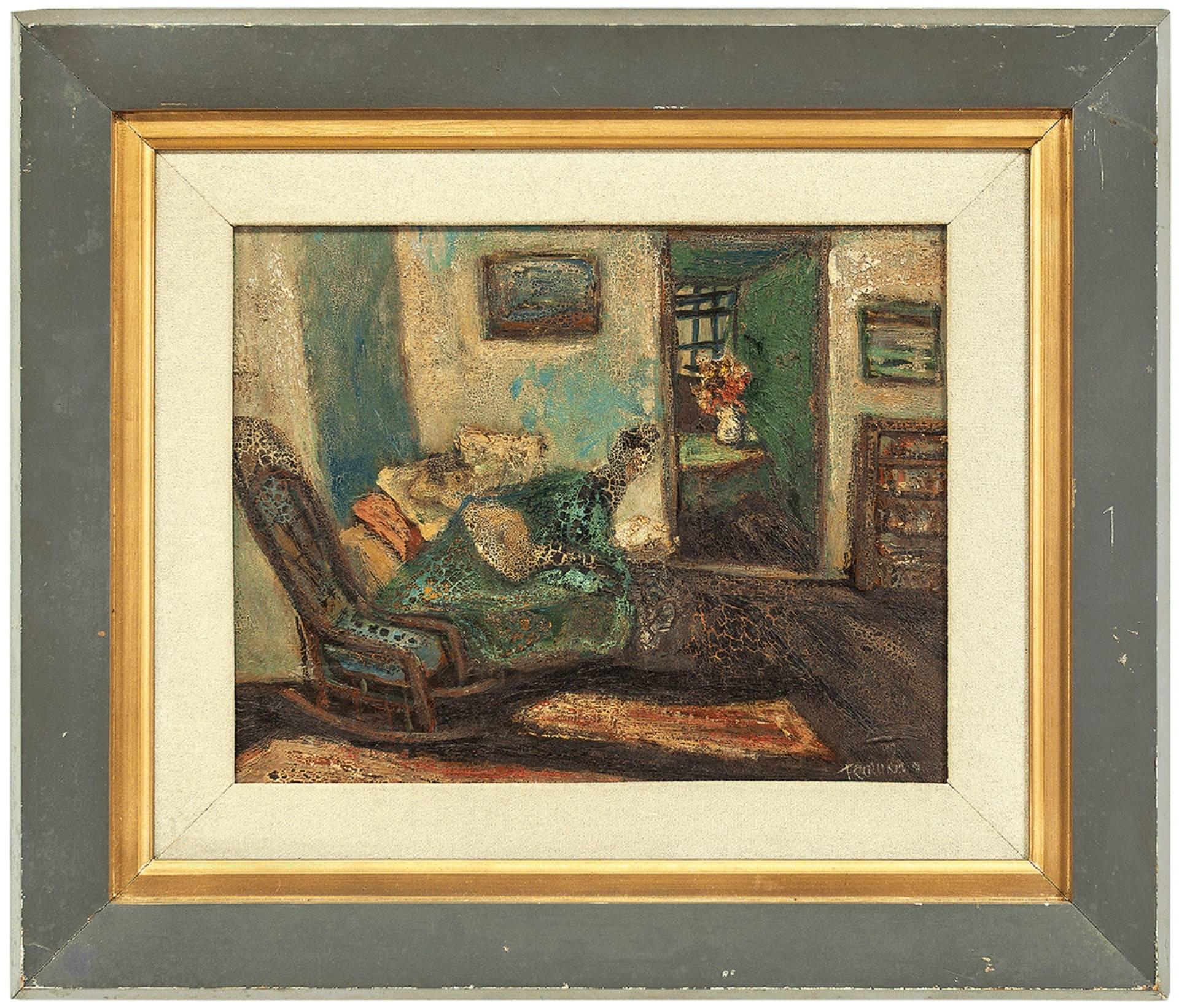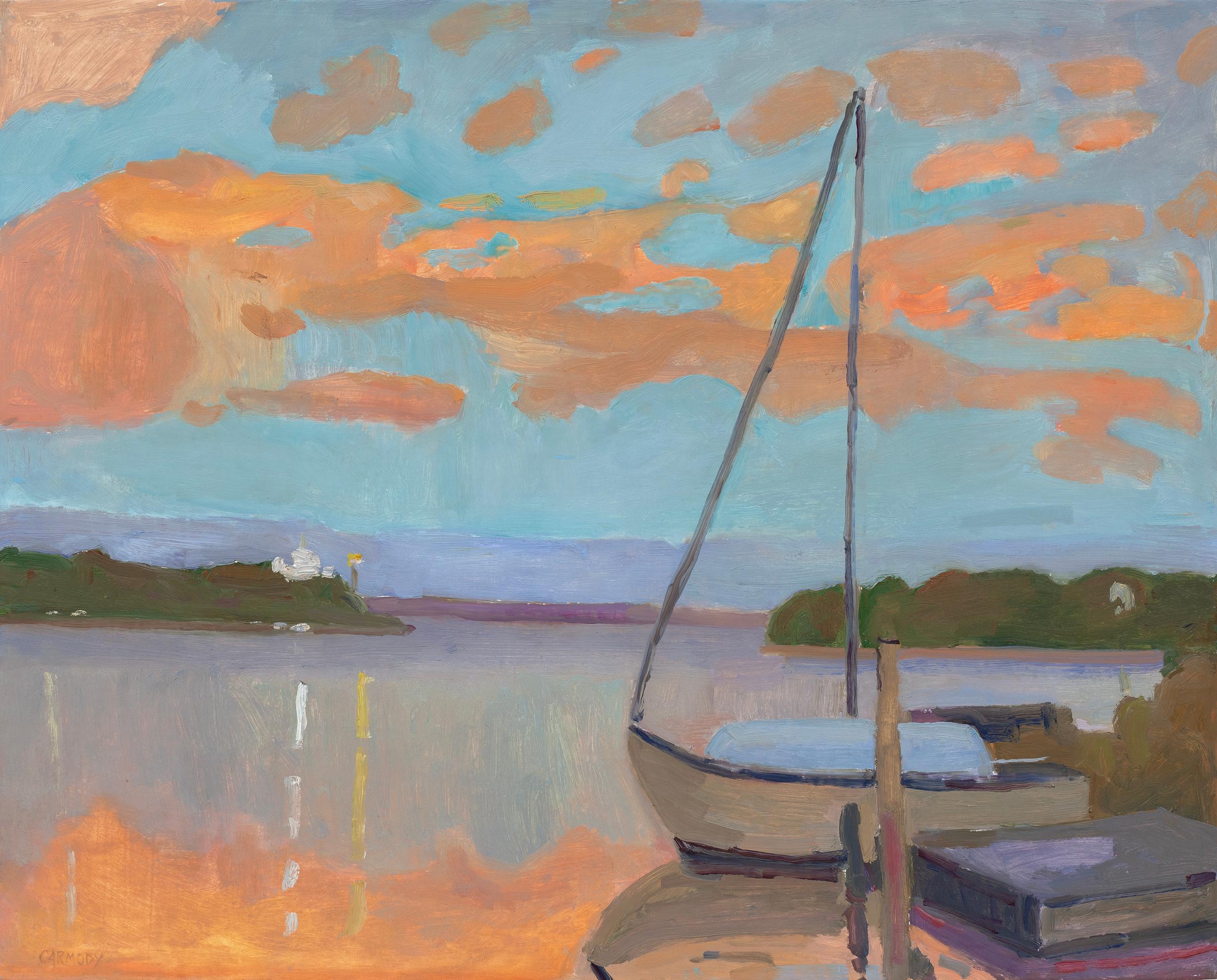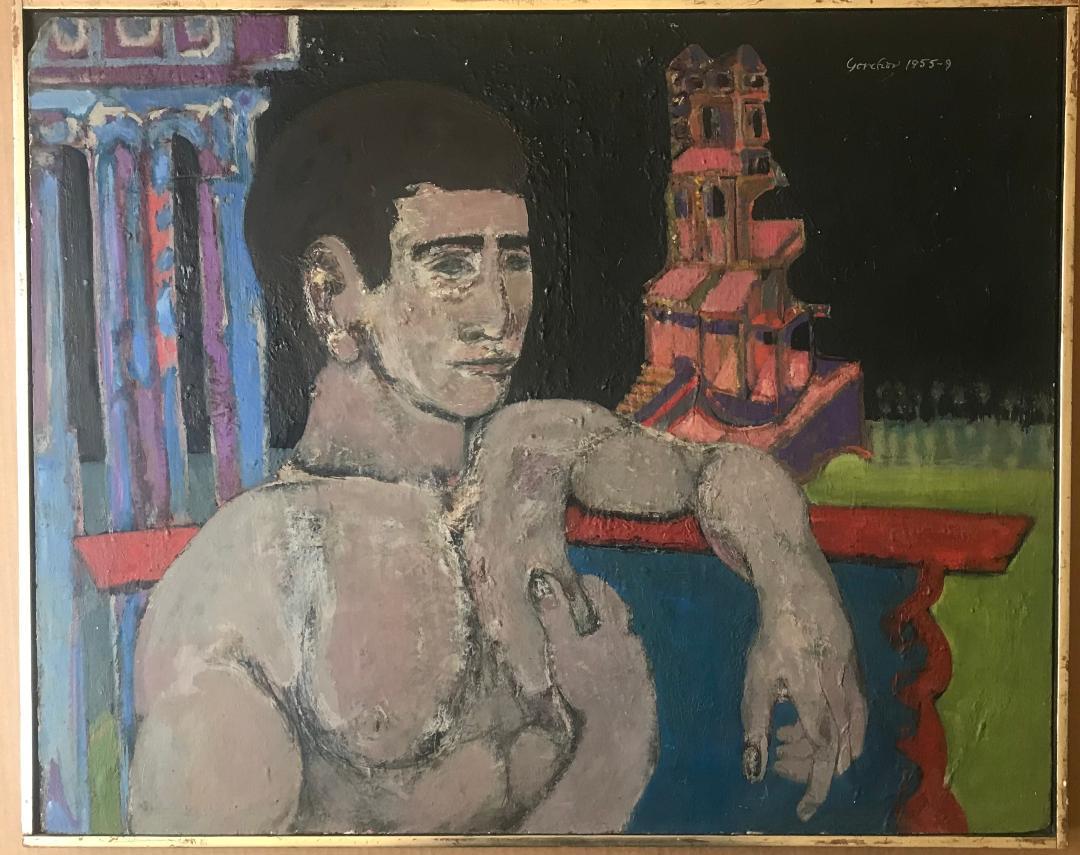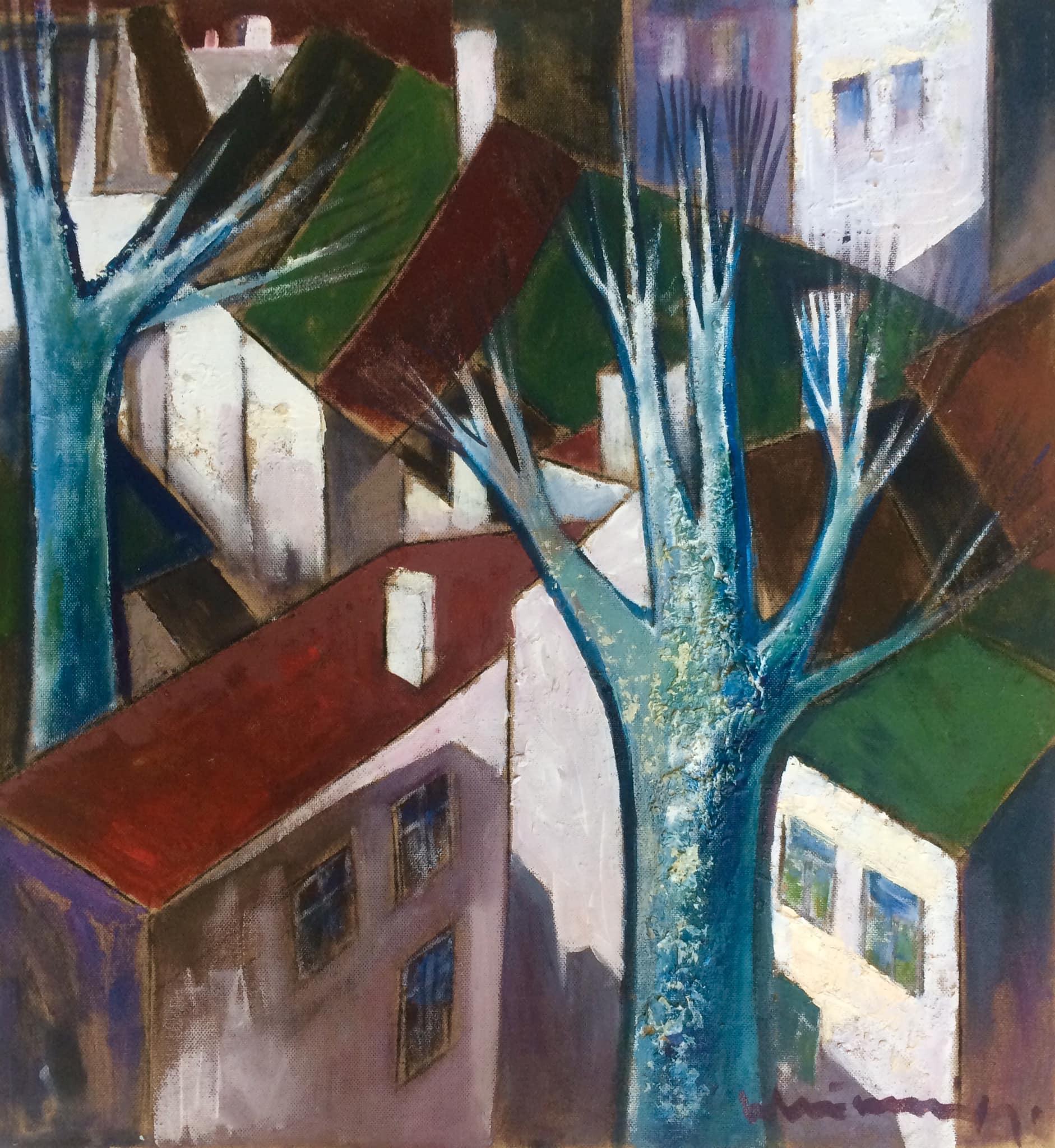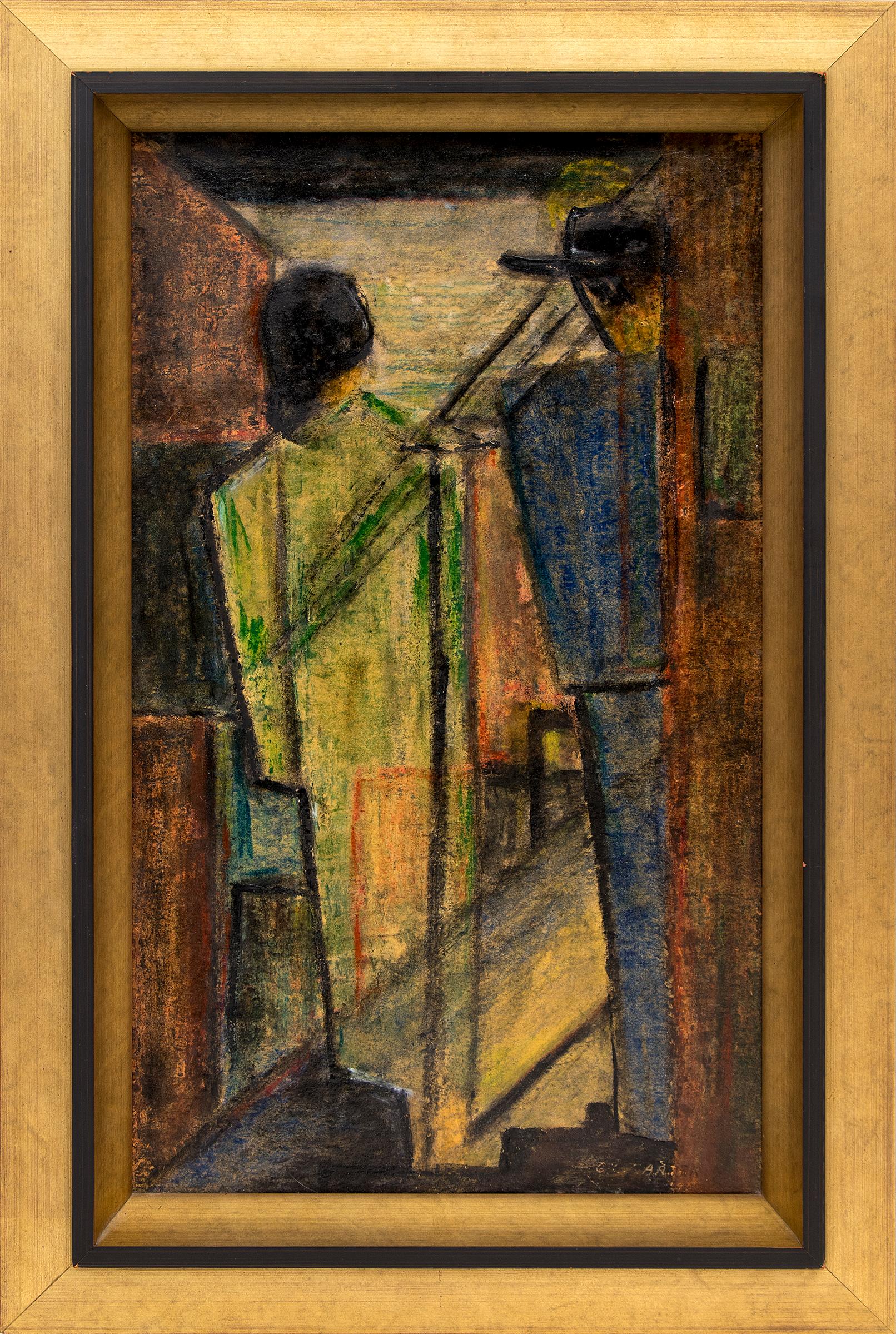Stanley Bate"Abandoned Village, " 1960s Modern Abstract PaintingC. 1960
C. 1960
About the Item
- Creator:Stanley Bate (1903 - 1972, American)
- Creation Year:C. 1960
- Dimensions:Height: 16.25 in (41.28 cm)Width: 20.5 in (52.07 cm)Depth: 2 in (5.08 cm)
- Medium:
- Movement & Style:
- Period:
- Condition:Signed by artist. Professionally framed.
- Gallery Location:Westport, CT
- Reference Number:
Stanley Bate
Stanley Bate was born on March 26, 1903, in Nashville, Tennessee, to Henry C. and Nellie E. Freeman Bate. The Bates were an established Tennessee family Henry’s brother William Bate was the governor of Tennessee from 1883–87 and a United States Senator from 1887–1905. William was also a Major General in the Confederate Army during the Civil War and quite a colorful character. Henry and Nellie encouraged their son to seek formal education, but young Stanley eschewed proper schooling and instead chose to study art at the Watkins Institute in Nashville. In the 20s, Bate moved to New York City to study at the Art Students League under Frederick Bridgman. He soon landed a job with Encyclopedia Britannica, and from 1927–29, served as art editor.
From 1929 until he died in 1972, Bate was a self-employed artist. He taught art classes at both the Art Students League and the Albany Institute of History and Art and brought in extra income by making illustrations for magazines such as Outdoor Life and Popular Science. On January 27, 1934, Bate married Emilie Rossel. Emilie had emigrated from Switzerland to New York in 1923. She found work as a governess to Alfred Vanderbilt and later as an executive secretary for Wall Street investment brokers Kahn, Loeb and Co. Emilie met Stanley in New York in the early 30s when she attended one of his art exhibitions with a friend. The couple, who had no children, lived on 34th Street in Manhattan. During this period, Bate was producing and exhibiting his art and joined several artists groups. Stanley and Emilie became part of the New York art scene, dining weekly at the Society of Illustrators Clubhouse. Bate’s time in New York was pivotal in the formation of his painting style. He lived in New York during the inception of one of the most important Modern Art movements, one that helped New York replace Paris as the center of avant-garde art. This movement, which was called the New York School of Artists, was later known as Abstract Expressionism. It was composed of a loosely associated group of vanguard artists working in New York City during the 40s and 50s. The New York School was not defined by a specific style, but instead reflected a fusion of European Modernism and American social relevance that was depicted in many individual styles. Influences of Surrealism, Cubism, and Modernism can be found in their work, along with an interest in experimenting with non-traditional materials and methods. American art was at the forefront of international avant-garde for the first time.
Bate was undoubtedly exposed to the varied styles and techniques that were emerging during the formative years of the New York School. Mark Rothko and Robert Motherwell were formulating their versions of color field paintings. Joseph Cornell was experimenting with assemblages, collage and the use of different types of textured paints. Jackson Pollock was adhering objects such as buttons and coins into his early works, while Louise Nevelson was using found objects. Helen Frankenthaler added sand to her early paintings. The New York School artists were undermining traditional fine art by using mixed media and non-traditional methods. Bate absorbed these varied influences and soon his early realistic landscapes and still-lifes were replaced with something entirely new. The influence of Cubism, notably the flat shallow space of the picture plane, is obvious in many of his paintings. Surrealism is evident in the use of subjects from myth, primitive art and antiquity, along with the Automatism-like line work in his more linear images. The unfettered experimentation of the New York School is everywhere in Stanley’s work. We see nods to the color field, collage, the mixing of textures into the paint, mixed media, the inclusion of found objects and thick, luscious impasto. He was prolific and experimented in various media including oil, watercolor, lithography, silkscreen, woodcut, drawing, collage, ceramics and sculpture. He is considered a true Modernist. His work is largely abstract, but sometimes figures and buildings are discernable. He frequently mixed paint, sand and glue to achieve a textured surface, and then scraped and scratched through this layer to expose some of the underpainting below. His sculpture, which is often whimsical, also reflects the non-traditional methods of the New York School. He pioneered the use of enamel and copper in his work. The sculptures are not carved or modeled as was done in the past but instead are built using mixed media and new materials.
In addition to the New York School influence, many of his works exhibit a strong connection to the Spanish school, especially the work of Antonio Tapies and Modesto Cuixart. These artists were both a part of an avant-garde group known as Art Informel, the Spanish equivalent of Abstract Expressionism. These artists likewise worked in mixed media and introduced objects and texture into their work. Many of Bate’s subjects and titles relate to Spanish locations and words. It is likely that Stanley spent time in Spain and found inspiration there. By the early 40s, Stanley and Emilie had started spending weekends in a barn they purchased in Craryville, New York, a few hours north of Manhattan. The barn had no electricity or plumbing, but when the couple eventually decided to leave New York and live full time in Craryville, they remodeled the barn, putting a gallery downstairs and a studio and living quarters upstairs. Although the Bates moved out of New York City, Stanley remained part of the New York art scene, exhibiting in New York and elsewhere throughout the 50s and 60s. During his lifetime, he was represented by the New York galleries Knoedler and Company, Kennedy Galleries, Rose Fried Gallery and Key Gallery, along with Tyringham Gallery located in Tyringham, Massachusetts. Craryville was Stanley’s home until his death on August 21, 1972. Emilie died in 1984. Her obituary requested that any donations be made to the Albany Institute of History and Art. The Institute held a retrospective exhibition of Bate’s work in 1973. Since his death, Bate’s artwork has been exhibited widely and placed in numerous collections.
- ShippingRetrieving quote...Ships From: Westport, CT
- Return PolicyThis item cannot be returned.
- "Untitled, " 1950s Modern Abstract PaintingBy Stanley BateLocated in Westport, CTThisoil painting on masonite board, "Untitled," by Modernist Stanley Bate was created circa 1950, part of his earlier body of work. The dark, heavy line work combined with bright col...Category
1950s Modern Abstract Paintings
MaterialsOil, Board
- "Untitled #305 (Trees), " 1960s Modern Abstract PaintingBy Stanley BateLocated in Westport, CTThis Modern painting by Abstract Expressionist painter Stanley Bate depicts large trees in an abstracted landscape. The palette is bright and vibrant, with expressive strokes of pain...Category
1960s Modern Abstract Paintings
MaterialsOil, Board
- "Centurion, " 1960s Modern Abstract PaintingBy Stanley BateLocated in Westport, CTThis vertical format abstract painting by Modernist artist Stanley Bate measures at 26" x 50" framed. The original gold-hued floater frame pulls out the vibrant and warm pops of yell...Category
1960s Modern Abstract Paintings
MaterialsGold Leaf
- "Instant Gratification" Abstract Geometric Oil PaintingBy Ned MartinLocated in Westport, CTThis abstract geometric painting by Ned Martin is made with oil on aluminum and board, and features a cool blue-grey palette. It is signed by the artist on the back of the board and ...Category
2010s Abstract Abstract Paintings
MaterialsMetal
- "First Glance" Abstract Geometric Oil PaintingBy Ned MartinLocated in Westport, CTThis abstract geometric painting by Ned Martin is made with oil on aluminum and board, and features a cool blue-grey palette. It is signed by the artist on the back of the board and ...Category
2010s Abstract Abstract Paintings
MaterialsMetal
- "Walk Softly, " Abstract Eagle PaintingBy Ned MartinLocated in Westport, CTThis abstract painting by artist Ned Martin features an eagle in flight, with the background and subject abstracted into small, geometric shapes and sections, with an almost pixelate...Category
2010s Abstract Abstract Paintings
MaterialsMetal
- Vintage Expressionist Portrait of a Man with a Bowtie Oil on WoodBy Michael PaukerLocated in Soquel, CAExpressive portrait, a caricature of a man with bowtie by Michael Pauker (American, b. 1957). Unsigned, but was acquired with a collection of the artist's work. Another version of th...Category
Late 20th Century American Modern Figurative Paintings
MaterialsOil, Fiberboard
- Abstract Interior SceneBy Abram TromkaLocated in Surfside, FLMeasures 16.5 X 20 without frame. heavy craquelure. it seems like some sort of experimental technique the artist used. paint is stable. please see photos Abram Tromka was born May 1, 1896 in Poland. At the age of seven he immigrated with his family to the United States, settling in New York City. It was on the boat coming to New York where Tromka first became interested in art. Fascinated by a woman who was painting, he decided that he wanted to become an artist. Upon arrival at immigration headquarters, Tromka’s family adopted the surname “Phillips,” which he kept until 1930. Hence the artist’s early works bear the signature — ‘A. Phillips.’ Having a rough childhood, Tromka left home at 15 and spent the remainder of his teenage years living at the Henry Street...Category
20th Century Modern Abstract Paintings
MaterialsOil, Board
- "Orange Clouds" American contemporary seascape with sailboat, eveningBy Kelly CarmodyLocated in Sag Harbor, NY"Orange Clouds" is an American Modern contemporary seascape with sailboat, evening. Kelly Carmody’s work has been widely exhibited and collec...Category
21st Century and Contemporary American Modern Landscape Paintings
MaterialsOil, Panel, Wood Panel, Board
- Early Mid Century Modern Self Portrait by renowned Abstract Expressionist SignedBy Ron GorchovLocated in New York, NYRon Gorchov Historic Self Portrait, 1955-1959 Oil painting on board Hand signed in paint on the upper recto and dated 1955-9 Frame included: held in original vintage artist's frame This work was exhibited at the Sager Reeves Gallery in Columbia, Missouri in their Masters Exhibit in December, 2022, and is reproduced as a full page in their exhibition catalogue. A copy of this catalogue accompanies the artwork. In 2019, the year before Ron Gorchov passed away, Stephen Truax, director of Cheim & Read, his then gallery, passed along details of this extraordinary painting to Gorchov's studio to be included in the forthcoming catalogue raisonne. When shown the work, Gorchov remembered it well, but was amazed that the painting was still in existence after so many years. This historic early self-portrait, done over a period of four years, from 1955-1959, starting when he was only 25 years old reveals Gorchov's distinctive and sophisticated sense of color and form. This is one of the artist's earliest works, and very few works by Gorchov from this era ever appear on the market or are known to remain in existence. It should be in any museum or career retrospective. This work was gifted by the artist to Elthea Rembrandt Peale...Category
Mid-20th Century Modern Portrait Paintings
MaterialsOil, Board
- Roofs. 1991, oil on cardboard 91x85 cmLocated in Riga, LVLaimdots Murnieks had a significant influence on the development of Latvian painting at the end of the 20th century. His work 'Holiday' conveys the feeling lightness and joy, which i...Category
1990s Modern Landscape Paintings
MaterialsOil, Cardboard
- 1970s Abstract Figurative Framed Oil Painting, Modernist City Scene With CoupleLocated in Denver, CO1950s oil on board painting by George Cecil Carter portraying a modernist couple, thought to be Alfred Stieglitz & Georgia O'Keefe. Presented in a custom frame, outer dimensions measure 20 ⅝ x 13 ½ x 1 ⅞ inches. Image sight size is 16 ⅞ x 9 ⅞ inches. Painting is clean and in very good vintage condition - please contact us for a complete condition report. Provenance: Private Collection, Denver Colorado Expedited and international shipping is available - please contact us for a quote. About the Artist: George Cecil Carter was born in Oklahoma in 1908 and became a noted Colorado abstract expressionist alongside contemporaries including Al Wynne, Mary Chenoweth...Category
1950s American Modern Figurative Paintings
MaterialsOil, Board

